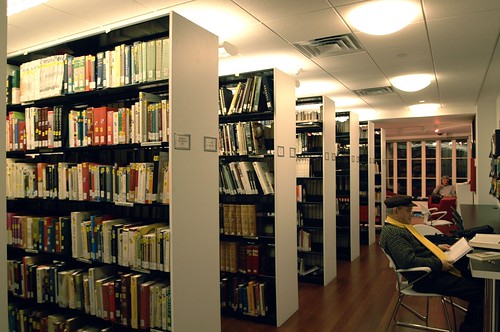Early last Thursday morning I joined other students of cultural policy and international relations to hear a panel discussion on the topic of cultural diplomacy. The panel, entitled “Culture as a tool: Diplomacy and International Exchange in the 21st Century” was co-presented by NYU’s John Brademas Center for the Study of Congress and the Wagner School’s Student Network Exploring Arts and Culture (SNEAC). Moderated by Frank Hodsoll, CEO of the Resource Center for Cultural Engagement and former chairmen of the NEA, the panel brought together representatives from UNESCO, The Asia Society, and the Instituto Cervantes in New York. The result was a series of interesting presentations that addressed some of the ways in which culture is being understood and engaged as a vehicle for larger objectives: fighting terrorism worldwide, promoting the foreign policy agendas, building grassroots understanding and dialogue among different cultures; and strengthening cultural identities and social cohesion.
I learned a great deal about how culture is being framed and funded in service of diplomacy or cultural understanding in different settings. Hodsell reminded us of America’s dismal record of supporting cultural on any front. In terms of “cultural engagement” (this seems to be the new catchphrase for cultural diplomacy) in foreign policy, he said, the Department of State is doing very little and what it is doing relies mostly on projecting the American image outward. Interestingly (and frighteningly for some) the Department of Defense has invested heavily in public diplomacy and is using culture as a way to build a better understanding of “other” cultures’ views. Towards the end of his talk, Hodsell alluded to the important ways in which culture leads to social change, citing Hugh Masekela’s music in Apartheid South Africa. In my experience, however, government support when culture workers use creativity to challenge injustice, is insufficient.
Rochelle Roca Hachem, a cultural officer at UNESCO, spoke about UNESCO’s involvement in the world Counter-Terrorism Implementation Task Force, in one of its five pillars: “addressing the conditions conducive to the spread of terrorism.” Though Ms. Roca Hachem didn’t specifically outline the programs at work to fight terrorism through culture, she did speak at length about culture’s role in building mutual understanding through intercultural dialogue and promoting social cohesion.
Asia Society’s Rachel Cooper discussed some of the “people-to-people” artist exchanges happening between the U.S. and Indonesia that serve to build a more grass roots mutual understanding between the two nations. In this context she alluded to many entrepreneurial efforts for cultural exchange and artist engagement that she had observed in Asia. She suggested larger institutions could learn from these. (It would be interesting to see how artists themselves take on “cultural engagement” outside of institutional support structures.) Cooper also spoke briefly about “Creative Voices of Islam,” an interdisciplinary education initiative that aims to use “the arts as a springboard to understand the diversity of Islam as a creative inspiration.” This seems like a direction many arts organizations in the U.S. are taking in order to respond to misinterpretations and reductionism of Islamic culture, such as the Kennedy Center’s Arabesque. These are examples where civil society-led initiatives create their own policy agendas in developing programs that use the arts to change minds.

Eduardo Lago, director of the Cervantes Institute in New York spoke about the role of his institution in responding to the many identities included in the Spanish-speaking world, namely Spanish, Latin Americans, and U.S.-based Latinos. He saw the Spanish cultural institute of having a duty to reflect these hybrid identities as well as offering education in the language that bond them together. His comments underscored the importance of diverse cultural institutions in destination countries for immigrants who may seek to maintain a connection to their homelands and build connections to their new homes, through culture.
The above presentations were directed at making the case for culture so that it will be recognized and valued more frequently as a strategic tool. In my professional life, I often find myself making some of the same arguments. As I left Thursday’s panel, however, I found myself questioning my eagerness to promote 'culture as a tool'. The relegation of ‘culture’ to the toolkit as an instrument to be wielded by those in power to affect particular sorts of social change seems to threaten some of cultures’ unique qualities. The power of culture lies in its insistence to evolve, experiment, react, and sometimes, to push back. Culture, however you want to define it, may not fit so comfortably in its toolkit slot. At the same time, if culture is not nurtured and valued outside of its instrumental use (like culture-based interventions in service of development goals) it may prove to be an empty tool without cultural practitioners to wield it and cultural contexts to receive it.
Photos: The Asia Society in New York at 725 Park Ave. and a view of the Jorge Luis Borges Library at the Instituto Cervantes at 211 E. 49th St.

Nice summary. I agree with you about the loss of culture's ability to evolve when wielded as a tool. Finding the balance between organic cultural growth and effective cultural relatability must be the goal when engaging in intercultural education for the benefit of understanding and peace.
ReplyDeleteHad the pleasure of citing your interesting account in my Public Diplomacy Review
ReplyDeletehttp://publicdiplomacypressandblogreview.blogspot.com/2010/03/more-recently-defense-department-has.html
May I note I share your skepticism about using culture as part of a so-called foreign policy "toolkit." I've never considered culture a type of hammer ...